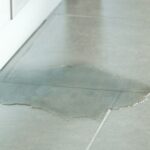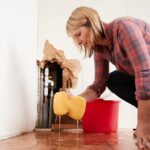That beautiful oak dining table passed down from your grandmother. The sofa you saved for months to buy. Your child’s bedroom set. When water invades your property, cherished wooden items like this are highly vulnerable, starting a race against time that many homeowners could do without.
At WetReset, we have seen the heartbreak on our customers’ faces when they realize their water-damaged furniture might not be salvageable. But in reality, quick action can mean the difference between restoration and replacement.
But how long does it take for water to damage furniture? What can you do about it if the worst happens? Through this blog post, we will cover everything you need to know.
How Quickly Does Water Damage Furniture?
From the moment water touches your furniture, the clock starts ticking on potential damage. The timeline varies depending on the furniture type, water quality, and environmental conditions, but the general progression might surprise you with its speed.
Let’s break it down in more detail:
The First Few Hours: Immediate Risks
Your furniture begins absorbing water immediately upon contact. Naturally, wood swells as it soaks up moisture, while upholstery and padding act like gigantic, efficient sponges. Within the first hour or so, you might notice:
- Wood furniture beginning to swell and soften along the grain
- Fabric upholstery becoming saturated, adding considerable weight
- Water rings forming on wooden surfaces
- Finishes starting to cloud or turn white
- Particle board expanding dramatically where water contacts it
A client once told us she thought her dining chairs were fine after a water pipe burst because—at least in her opinion—they looked dry on the surface. Two days later, however, she noticed the legs wobbling, and the internal damage was far too extensive to remedy.
Ultimately, the outer appearance of furniture can be quite deceptive. Damage often begins inside, where you can’t see it.
24 to 48 Hours: Structural Damage Begins
If water-damaged wood furniture isn’t addressed within the first day, more serious problems develop. Wood continues expanding, which can crack veneers, split solid pieces, and weaken glued joints. Upholstered items fare even worse, as the prolonged moisture creates perfect conditions for mold growth.
By this point, you’ll likely notice:
- Drawers that stick or won’t open at all
- Warping and bowing in wooden components
- Upholstery developing a musty odor
- Metal hardware beginning to rust
- Joints become loose as glue dissolves
- Veneers bubbling or peeling away from their base
The 24-48 hour window represents a hugely decisive turning point for water-damaged furniture. While all hope is not necessarily lost, and restoration is still possible, it becomes increasingly difficult to resolve and may require professional intervention.
48+ Hours: Permanent Damage and Mold Growth
After furniture has been wet for more than two days, the damage usually (but not always) becomes irreversible. Wood rot takes hold with aggression, breaking down the cellular structure of the material. Despite common belief, mold doesn’t just grow on surfaces, it penetrates deep into wood fibers and upholstery padding.
At this stage, you might expect to see:
- Visible mold growth on fabrics and wood surfaces
- Strong, unpleasant odors that persist even after surface cleaning
- Severe warping, splitting, or cracking of wooden components
- Particleboard or MDF falling apart (literally)
- Upholstery padding that remains wet inside despite surface drying
- Rusted metal components staining surrounding materials
We once helped a family on vacation when their water heater failed. After 14 days of exposure, their water-damaged wood furniture was beyond saving. The dressing table legs had disintegrated, and mold had colonized every cushioned surface.
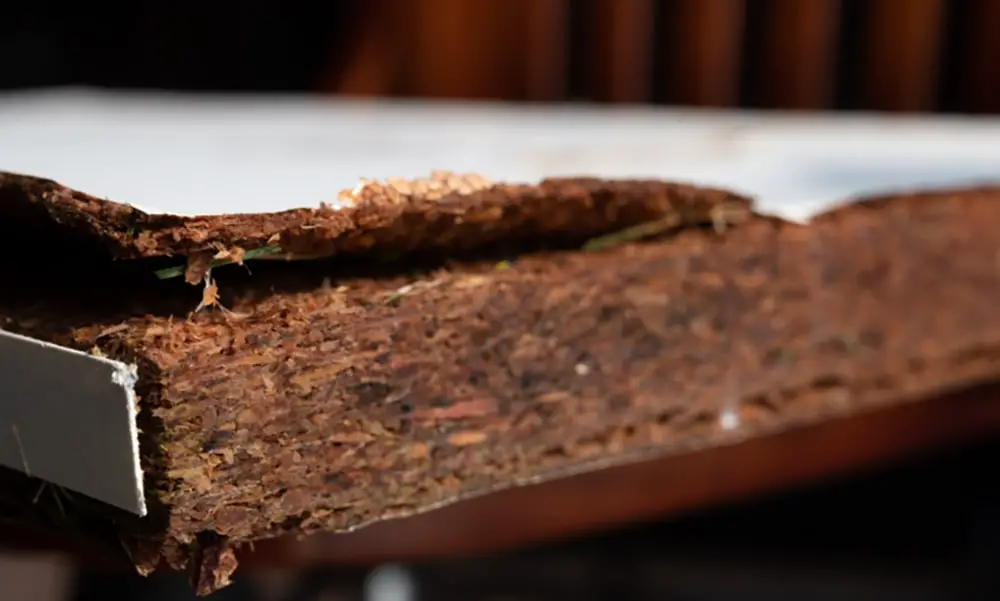
Can Furniture Be Saved After Water Damage?
We certainly don’t wish to sound alarmist. Fortunately, not all water-damaged furniture is destined for the garbage truck. Many pieces can be salvaged with quick action and proper techniques. The key factors determining whether furniture can be saved include material composition, time in water, and type of water exposure.
Salvageable vs. Unsalvageable Materials
As you would expect, different furniture materials react to water in unique ways, affecting their chances of being salvaged:
Solid Wood Furniture: Quality hardwood furniture often has the best chance of surviving water damage. With a naturally dense structure that resists quick absorption, proper drying can prevent permanent damage if started early. Antique solid wood pieces have often survived for generations precisely because of this resilience.
Upholstered Furniture: Couches, armchairs, and other upholstered items are more challenging. While wooden or metal frames might be salvageable, padding and fabric quickly become saturated. If dried within 24 hours, there is a reasonable chance of complete restoration. Beyond that timeframe, however, the risk of lingering odors and various types of mold growing will increase quite dramatically.
Particleboard/MDF Furniture: Unfortunately, these engineered wood products rarely survive serious water exposure. The compressed wood fibers and binding adhesives quickly break down when wet, causing irreversible swelling and structural failure. Even minor water damage can cause these materials to crumble – far quicker than most expect.
Metal Furniture: Obviously, metal frames survive water exposure extremely well, although rust can develop quickly on untreated surfaces. By the same token, rust can also be removed if addressed quickly.
Type of Water Exposure Matters
Of course, not all water damage scenarios should be treated equally. The source and cleanliness of the water greatly influence how long it takes for water to damage furniture.
The scenarios can be broken down into different categories:
- Clean Water (Category 1): Water from broken pipes, rain, or overflowing sinks is considered relatively clean. Furniture exposed to clean water has the best chances of restoration, as there are fewer contaminants to complicate the process.
- Gray Water (Categor 2): Water from washing machines, dishwashers, or clean toilets contains some contaminants. Furniture exposed to gray water requires more thorough cleaning during restoration, and porous materials like cushions may need to be replaced.
- Black Water (Category 3): Sewage backups, river flooding, or standing water that has developed bacterial growth create the most dangerous situation. Most upholstered furniture exposed to black water cannot be safely salvaged due to health risks from bacteria, chemicals, and other harmful substances.
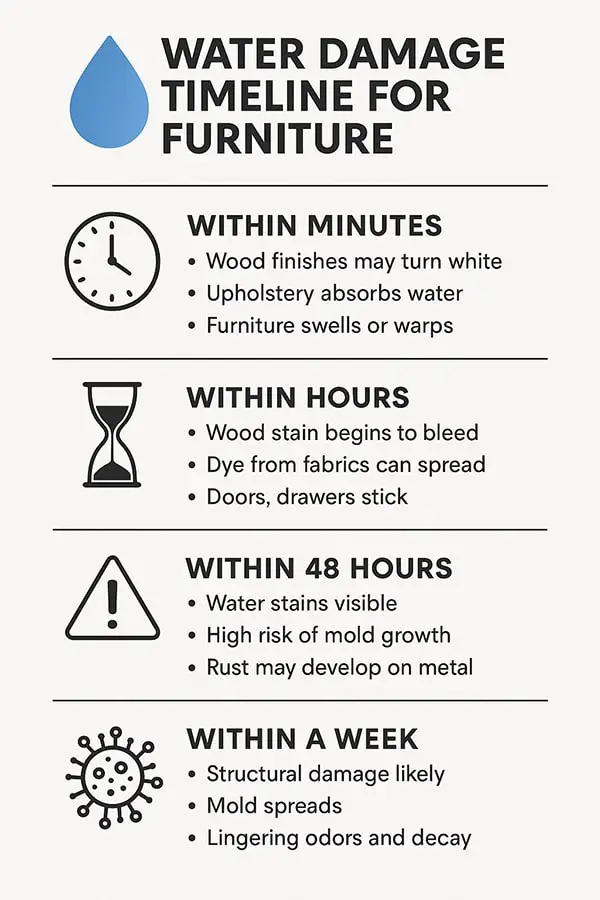
How to Dry and Restore Water-Damaged Furniture
Again, when presented with water-damaged furniture, fast and appropriate action can make the world of difference between restoration and costly replacement. Here’s how you can increase your chances of saving precious pieces and reduce your chances of spending thousands.
Immediate Steps to Prevent Further Damage
The moment you discover water-soaked furniture, the countdown begins:
- Safety first: Ensure there are no electrical hazards before entering standing water
- Remove furniture from water: Move pieces to a dry area with good air circulation
- Document the damage: Take photos for insurance claims before beginning work
- Start the drying process: Use towels to blot excess water (don’t rub, which can damage finishes)
- Increase air circulation: Position fans to blow across furniture surfaces, not directly at them
Moving furniture outdoors on a warm, sunny day can help accelerate drying, but always avoid direct sunlight on fine wood pieces, as this can result in additional warping or fading.
Restoring Solid Wood Furniture
Water-damaged wood furniture often responds well to the following restoration techniques:
- Start by removing all hardware, drawers, doors, and removable parts to allow complete access for drying. Use dehumidifiers in the room to pull moisture from the air and from the wood itself.
- Allow the wood to dry slowly and evenly. While drying a water-damaged property with dehumidifiers or heaters is a wise move, it can have the opposite effect on furniture, as moisture leaves the wood too quickly.
- For white water spots on finished wood, a mixture of equal parts white vinegar and olive oil can sometimes remove cloudiness if the damage is superficial. Deeper damage requires professional refinishing.
- If joints have loosened, wait until the piece is completely dry before applying wood glue and clamping. Attempting repairs while wood still contains moisture typically leads to failed joints later.
Saving Upholstered Furniture
The secret to saving upholstered pieces is reaching the moisture trapped deep inside. That isn’t an easy accomplishment, but the following steps might help:
- Use a wet/dry vacuum to extract as much water as possible from the cushions and fabric. If the cushion covers are designed to be removable, remove them and wash them according to the manufacturer’s instructions.
- For attached upholstery, apply a dry baking soda paste to absorb odors and moisture, then vacuum away when dry. If musty smells persist after drying, a fabric-safe enzymatic cleaner can help break down odor-causing compounds.
- Be realistic about heavily saturated pieces, especially those exposed to water for more than 24 hours. The padding inside upholstery often remains damp long after surface fabrics appear dry, creating ideal conditions for hidden mold growth.
Dealing With Mold Growth on Water-Damaged Furniture
If you notice even small amounts of mold on furniture, address it immediately:
For hard surfaces on wood furniture, use vinegar to kill mold. Commercial anti-fungal cleaners also work well for non-porous surfaces.
For upholstery with visible mold, you might want to accept defeat and replace the affected components. Surface cleaning rarely reaches mold that has penetrated padding and backing materials – in many cases, new furniture is the safest bet.
Whatever your approach, always wear protective gear when cleaning mold. Use gloves, eye protection, and a respirator mask. Work in well-ventilated areas to avoid inhaling mold spores.
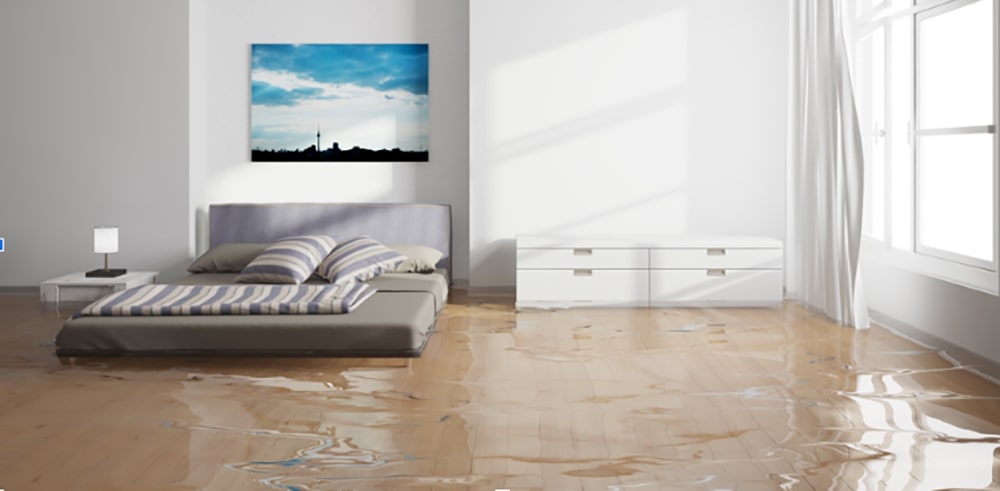
When to Call a Professional for Restoration
While DIY approaches can save some water-damaged furniture, certain situations call for the professional touch, including:
- Valuable antiques or heirlooms where improper restoration could diminish value
- Furniture that’s been wet for more than 48 hours, especially upholstered pieces
- Items contaminated with black water may require specialized sanitization
- Extensive mold growth that has penetrated beyond surface areas
- Fine wood furniture with veneers, inlays, or complex construction
Professional restorers have specialized equipment that can detect hidden dampness inside furniture that appears dry on the surface. At WetReset, for example, we use commercial-grade drying equipment to properly address different materials, not to mention our many decades of experience.
Ultimately, there is only so much a typical homeowner can do without that expertise and state-of-the-art equipment to treat water-damaged wood furniture.
Preventing Future Water Damage to Furniture
While you can’t control every water risk, the following preventive measures can protect your furniture from future water damaged furniture:
- Elevate furniture in flood-prone basements or ground floors using waterproof blocks or risers
- Apply water-resistant sealants to wood furniture in high-risk areas
- Install water leak detection devices near vulnerable areas
- Keep furniture away from windows that might leak during storms
- Use furniture coasters under the legs to prevent moisture absorption from damp floors
- Consider water-resistant fabrics when purchasing new upholstered pieces
Some of our customers have even designated “safe rooms” on upper floors for valuable or sentimental pieces, where irreplaceable furniture is better (but not fully) protected from events that lead to water damage in the home.
Making Smart Decisions About Water-Damaged Furniture
As with many things in life, you need to weigh up the potential cost – both financially and emotionally – of replacing water-damaged furniture:
Replacement Cost vs. Restoration Cost: Sometimes, the economics simply don’t work in favor of restoring water-damaged furniture. Mass-produced, lower-quality furniture often costs more to restore professionally than to replace. You might wish to save your budget for pieces that are truly worth the investment.
Sentimental Value: That said, some pieces obviously carry value far beyond their price tag. Family heirlooms or items with strong emotional connections might be worth professional restoration attempts, even when the financial equation suggests otherwise.
Health Considerations: This one should go without saying, but it is surprisingly overlooked – always prioritize your family’s health. Furniture contaminated with black water or persistent mold growth can pose serious health risks, especially to children and elderly family members.
Insurance Coverage: Before making restoration decisions, check your insurance policy. Some policies cover professional furniture restoration after water damage, while others only provide replacement value.
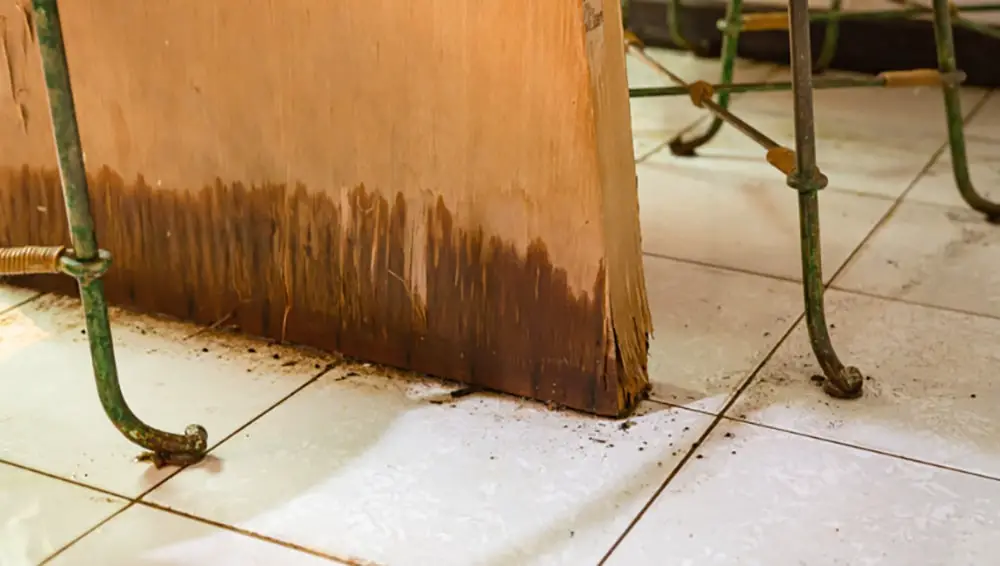
Bottom Line: Time is Of the Essence!
Remember, with water-damaged furniture, damage usually occurs in hours, not days. The intervention window is just 24-48 hours in most cases, so you need to act fast.
Regardless of how quickly you react, can furniture be saved after a flood or something of similar seriousness? It really depends on various factors, but with quick action and proper techniques, you have a reasonable chance.
At WetReset, we have helped many clients save cherished pieces after water damage, and success always depends on response time. To that end, don’t wait to address water-damaged wood furniture because every hour counts.


